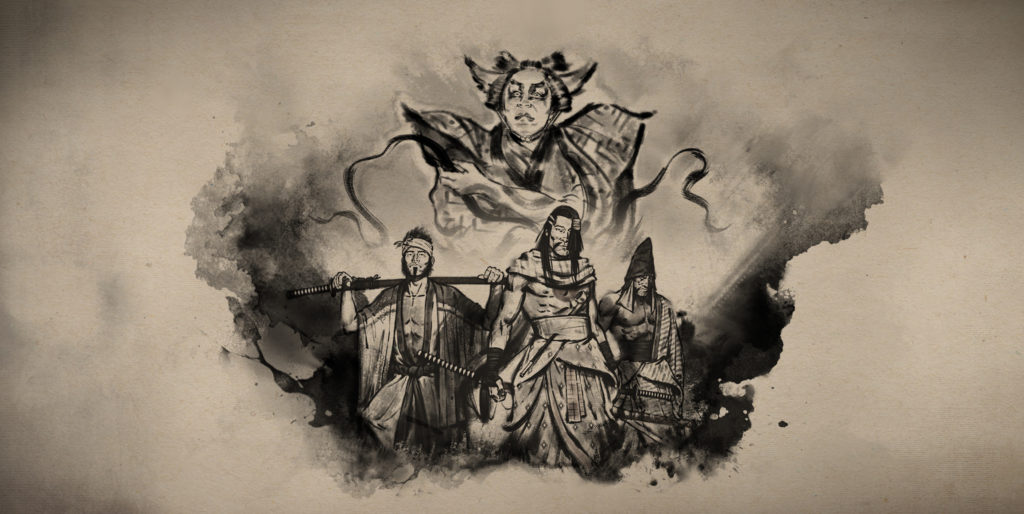
Kabuki is one of Japan’s most iconic forms of traditional performance art. It combines music, dance, and theater with elaborate costumes and sets. Today, kabuki is internationally acclaimed, but it originated as the art of the people during the 1600s.
Between the late Warring States period and the early Edo Period, the kabukimono movement arose in Japan. Often translated as “strange things” or “the crazy ones”, kabukimono were gangs of samurai who rejected tradition, wore exotic and flamboyant clothing, and sported uncommon hairstyles and facial hair. Their weapons were also unorthodox: they are recorded as using overly-long katana with fancy hilts, red scabbards, and sometimes even long kiseru pipes as weapons.
Kabukimono became notorious for their antisocial behavior and criminal tendencies. They engaged in wrestling, loud singing, and dancing in public, and gang violence after dark. They also boasted about their bravery, picked fights, and robbed people. While the violent actions of these gangs were inherited by later delinquent and criminal movements, the kabukimono aesthetic lives on in kabuki theater.
Tradition states that the first kabuki performance was done by the miko Izumo-no-Okuni in 1603. She danced to popular songs, wore men’s clothing, and adopted the kabukimono aesthetic. Her work became incredibly popular and inspired many imitators. Kabuki was often performed in red-light districts by prostitutes, some of whom would offer themselves to spectators after the performance.
The Tokugawa Bakufu banned women from performing Kabuki in 1629 and young boys in 1652 to try and address the connection to prostitution. Only the style of kabuki performed by grown men was permitted to continue, and it is still performed today.
In Tale of Ronin, the kabukimono movement is still in full swing and flamboyantly-dressed gang members roam the land picking fights. Women were banned from performing kabuki less than a decade ago and young boys are still permitted to perform. Players will have the opportunity to observe the birth of an art form… and its connection to a violent countercultural movement. After all, not every masterless samurai was content to roam in search of a new lord to serve.